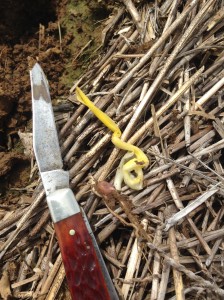We still have miles to go before all of our corn is in the ground, but some folks are turning to planting soybeans this week. Some acres are behind Leadoff in the burndown program. Leadoff at 1.5 ounces of product per acre has a 30 day plant back to soybeans. In most years, 30 days along with some rain is enough time for the material to break down in the soil and not cause injury to soybeans. In 2013, root and plant stunting were observed in soybeans planted at the correct time following Leadoff and this was attributed to an overall cool wet environment causing slower breakdown of rimsulfuron in the soil. Symptoms were not seen in STS (sulfonylurea tolerant) varieties planted at the same time. Bottom line, this spring with cooler and wet soil conditions, expect Leadoff breakdown to be slower and unless varieties are sulfonylurea tolerant there may be some stunting observed in non-STS varieties planted early or inside the 30 day window, particularly in end rows and areas where spray overlap occurred.

